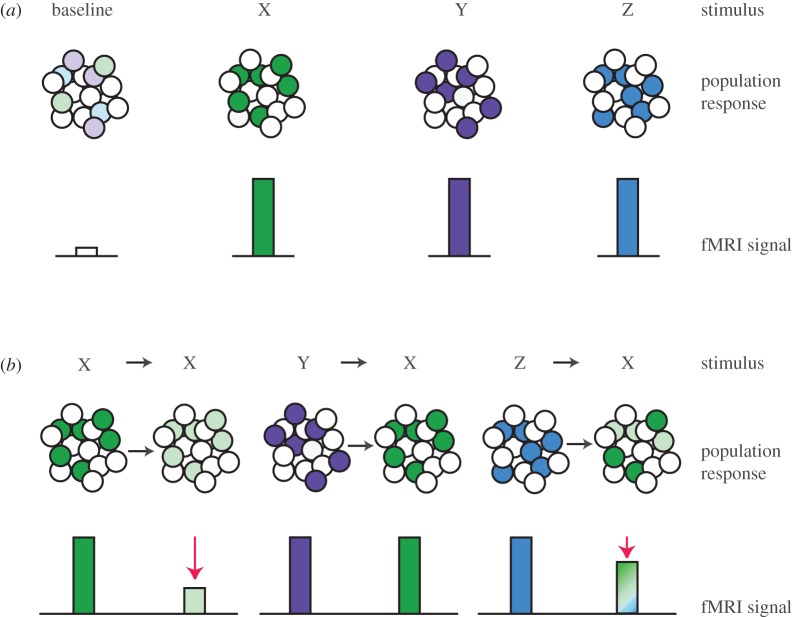Figure 3.
Schematic illustration of the principle underlying fMRI adaptation. (a) The raw BOLD signal measured in conventional fMRI paradigms provides only a measure of the mean activity of the population of neurons within a given voxel. In this example, the raw BOLD signal in response to stimuli X, Y and Z is the same, because the average neural activity within the voxel is comparable for all three stimuli. The raw BOLD signal alone is therefore invariant to the relationship between representations of stimuli X, Y and Z. (b) In fMRI adaptation paradigms, the relationship between different stimulus representations X, Y and Z may be indirectly measured. If stimulus X is preceded by stimulus X (X→X), then the fMRI signal in areas encoding features particular to stimulus X is suppressed. If stimulus X is preceded by stimulus Y (Y→X), the response to stimulus X should not show any suppression, as the representations for X and Y are not overlapping. If stimulus X is preceded by stimulus Z (Z→X), the response in areas encoding the features that are shared between X and Z should show suppression which scales with the amount of overlap between representations of X and Z.

